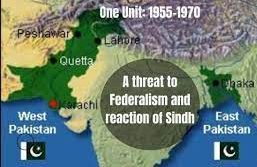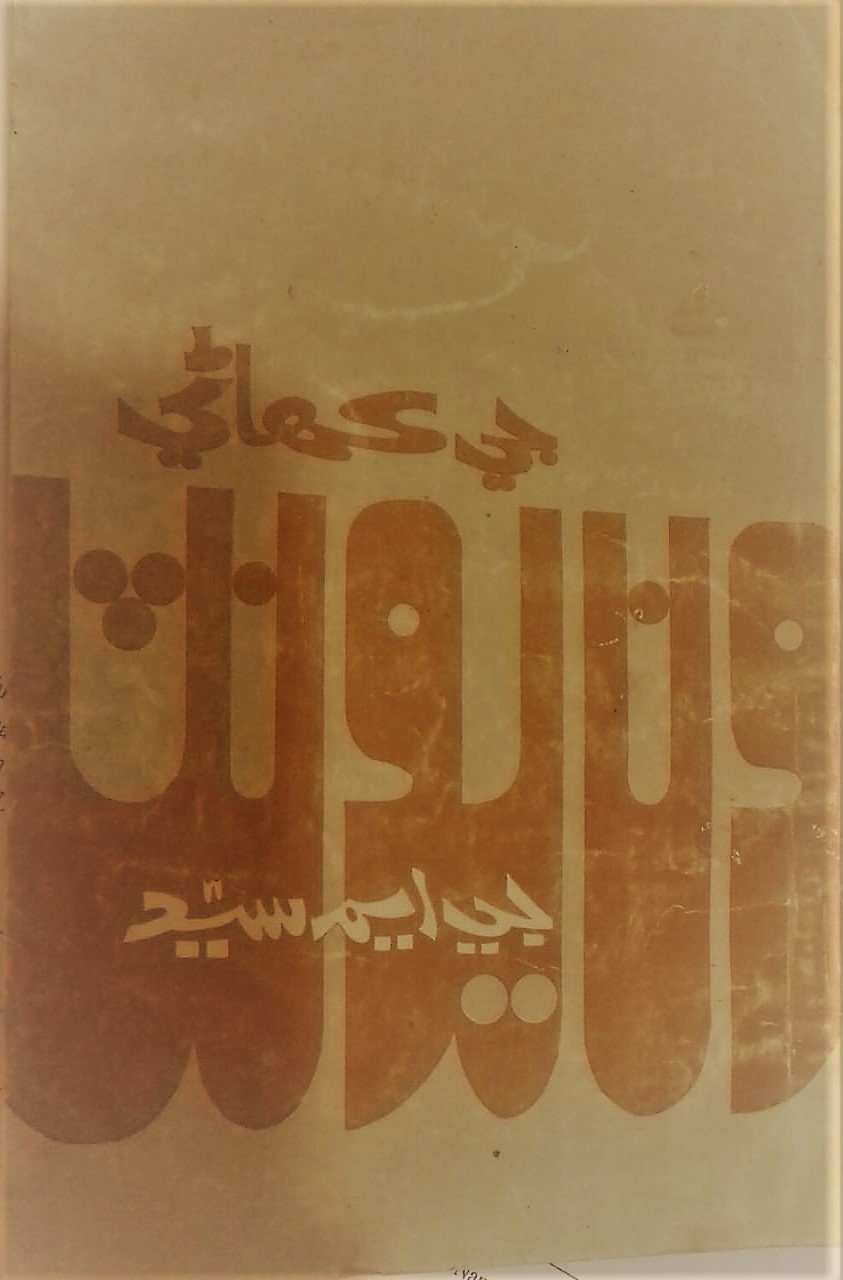
In his speech at Sindh University Bhutto had said that he cannot scarify Punjab’s interests for Sindh.
Dr. Zaffar Junejo
(Author’s Note: One Unit was dissolved on 1st July, 1970. Sindhi nation along with Bengalis, Balochis, and Pathans fought against it through platforms of cultural associations, literary organizations and political parties. By and large One Unit was opposed across Pakistan however the Anti-One Unit Movement’s epicenter was Sindh. Sindh opposed One Unit because it was considered a tool to alter its demography, grab resources and strategically control wealth of the province. Sindhi nationalists, supported by other political parties forged an association to realize one point agenda – dismantle One Unit. They carried the struggle in all odd and even situations, and bore the cost – jails, punishments, insults, life threats and issuing of ‘certificates’ of disloyalty and treachery but they continued their struggles, and got it undone – Sindh was restored with its full name, and titles.
In 2020, an idea was floated by some Sindh-lovers that Sindh has to celebrate Anti-One Unit Abolition Day as the Golden Jubilee event, just to cherish, and recall the successful struggle of Sindhi peoples. In this regard, the author intends to translate some of the basic and most relevant documents from Sindhi language into English, in sprit of celebration and remembrance. The first in the series is Saeen GM Syed’s article: One Unit Jo Qiyam: Mukhalfan Ja Khadsha and Muwafqan Ja Faidi Mean Dalil (Formation of One Unit: Opponents’ Apprehensions and Supporters’ Arguments in its favor).

The article is taken from the booklet: One Unit Ji Kahani (The Story of One Unit). The book was authored by GM Syed and published by Yar Muhammad Ibin Hayat Panhwar, Secretary Sindh Mutaheda Mahaz, Markazi Office, Al-Khalil Building, Qazi Qayoum Road, Hyderabad. Its printer was Begum Zeenat Channa, ‘Zeenat Printers’ Khokhar Mahlo Hyderabad. Its first edition with 2000 copied came in November, 1969 – Dr. Zaffar Junejo.)
One Unit Ji Kahani (The Story of One Unit) – IX
GM Syed
Pakistan Peoples’ Party
The founder of this party is Zulifkar Ali Bhutto; he was part of General Ayub Khan’s government for eight years as a minister; he was his right hand man, and prominent worker of the Convention Muslim League. He was very much supportive of General Ayub Khan, according to Fazil-u-Qadir and others; he is answerable for following actions:
- He even didn’t avoid suggesting that Deputy Commissioners and Police Superintendents should be nominated as office bearers for the Convention Muslim League.
- All Mullahs and Moulvis, who are involved in politics, should be killed with bullets.
- Muslim nation in its history has only produced two persons: One Salahuddin Ayubi and second General Ayub (Note: highlights are of author).
- One of the lead objectives of the Convention Muslim League was the formation of One Unit; I have already discussed it in the preceding paragraphs. Now question is why he didn’t show his patriotism at that time?
- He supported Ayub Khan against Ms. Fatima Jinnah. Although, it was known to him that Ms. Jinnah is sister of Quaid-e-Azam.
- How he got support from capitalists and members to popularize Ayub Khan’s party.

Now the question before us is that after such services, why he was expelled from the ministry?
In the response to that question, these might be possible replies:
- a) He opposed and exposed General Ayub Khan’s acceptance of “Tashkent Declaration” as a treason, and propagated against him. Therefore, he was ousted!
- b) Ayub Khan’s concerns about his loyalty, the pressure of the foreign countries, or he worked against the interests of Pakistan. Therefore, he was expelled from the ministry!
Presently, he is away from influence of Ayub Khan. Therefore, he could share his side of the story. But, till now he is silent, therefore, it seems that reasons for his ousting would remain a secret.
He exposed malpractices and corruptions that happened in Ayub’s era, people agreed to him and he was opposed by none. But, now the situation is changed, and the constitution is being framed.
Presently, the question before us is that how this young man, a resident of Sindh, a handsome person, having an attractive personality would play his role to liberate Sindh from the One Unit – it is really a serious question.
Bhutto Sahib’s following four points confuse us a lot:
- His speech at Sindh University that he couldn’t scarify Punjab’s interests for Sindh.
- His speech in Punjab that he is opponent of One Unit. But agreed to accept the constitution of 1956, if certain amendments are made.
- He has never spoken a single word against the zonal federation.
- He is against One Unit, but opposes Awami League’s ‘six point’ agenda, and he knows that it is the lead party of East Pakistan. In addition to that, he fully understands that without the support of Bengalis One Unit couldn’t be abolished.
 Another concern is his workers’ indulgence in the following activities, and their attitude is beyond our understanding:
Another concern is his workers’ indulgence in the following activities, and their attitude is beyond our understanding:
- In his newspaper, why Pir Pagaro is being taunted?
- Why he (Mr. Bhutto) encourages his workers to call a pious man like Muhammad Qasim as an infidel?
- Why his workers label prominent workers of Sindh Mutaheda Mahaz as ‘Indian agents’, ‘supporters of feudal lords’, ‘maternal-grandsons of Raja Dahar’, and ‘ruins of Moen-Jo-Daro’? What is rationality to demean political workers? What holds him back to be part of Sindhi brethren’s alliance ‘Sindh Mutaheda Mahaz’? How he would be able to free Sindh from One Unit, while he opposes Bengal and small provinces’ majority, (who are against One Unit)?
It is true that in young age, emotions never create a room for rationality. However, we sincerely advise him to leave such arrogance, and join Sindh Mutaheda Mahaz. The below mentioned couplet of Shah Latif is enough to open his eyes:
مَتَو آهِين مَڇَ، ٿُلُهو ٿَو ٿُونَا هَڻِين
جَا تَو ڏِٺِي اَڇَ، تَنهَن پَاڻِيءَ پُنَا ڏِينهَڙَا
_____________________
 Dr. Zaffar Junejo has a Ph.D. in History from the University of Malaya. His areas of interest are post-colonial history, social history and peasants’ history.
Dr. Zaffar Junejo has a Ph.D. in History from the University of Malaya. His areas of interest are post-colonial history, social history and peasants’ history.
Click here for Part-I , Part-II, Part-III, Part-IV , Part-V , Part-VI, Part-VII, Part-VIII